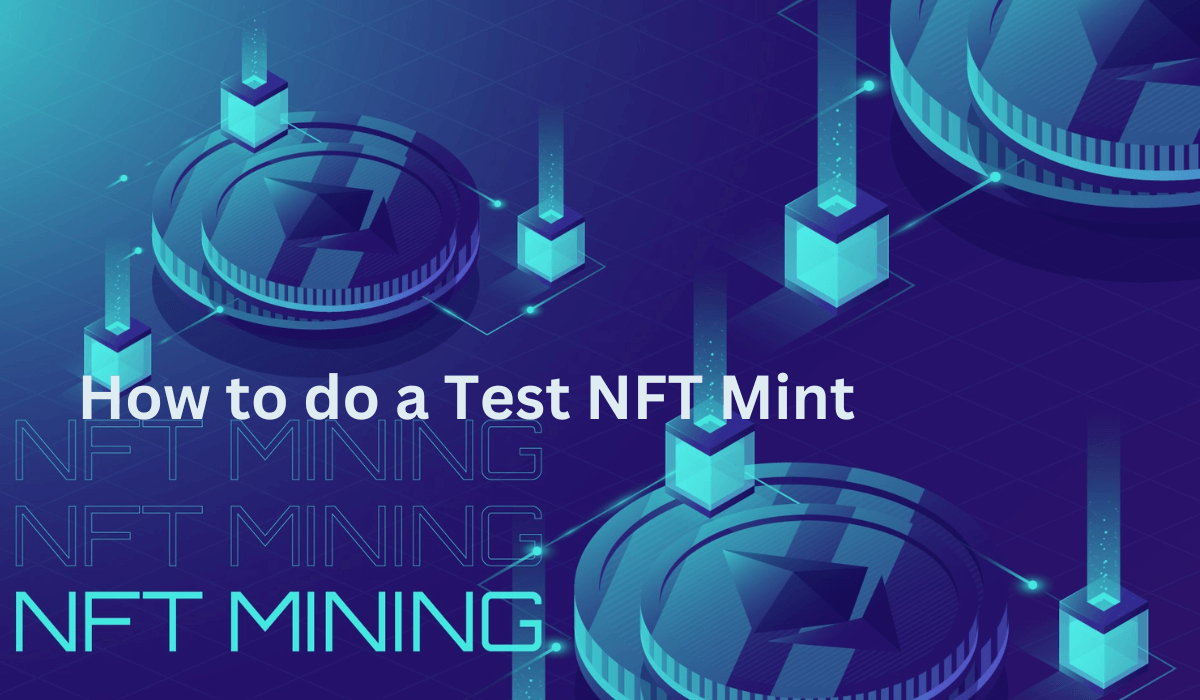
Introduction
A testnet is a sort of alternate Blockchain where a lot of what is done on the Blockchain is tested out first. On the test net, you can mint nfts and carry out other practical Blockchain activities at no cost. This can help you forestall any errors when you want to mint your nft and set them up on an nft marketplace like Opensea; hence you can trade your nft on Opensea
Steps to do a Test NFT Mint
To mint an nft in the test network, there are a couple of steps to take.
Step 1: Get Your Smart Contract Ready
A smart contract is a contract set on a digital platform that runs when its executable conditions are met. Smart contracts are used to create NFTs and then reassign ownership when they are sold or traded. The smart contract will automatically make the token’s creator the sole owner whenever a new non-fungible token is created. Smart contracts are a tool to help put into action a contract to buy or sell something. Without an intermediary or governing body, they can check your insurance status and give you your eth like a vending machine. They also ensure that NFTs can’t be split and that the digital assets are truly unique.
To facilitate the bidding process for NFTs, some NFT marketplaces implement a set of smart contracts. Smart contracts can be drafted using a variety of dApps such as Remix integrated development environment (IDE).
Step 2: Set Up Your Test Network and Node
The Ethereum Blockchain has its set of testnets that you can use to mint nfts. Since the gas fees for executing a contract on the mainnet, i.e., Ethereum Blockchain, can be quite expensive, an Ethereum test net is the way to go. There are four major test networks you can use for Ethereum simulations; they are Rinkeby, Kovan, Ropsten, and Goerlich. These networks, besides Goerli, are all managed by the same team, the Geth developer team. All the networks have a requirement of having you link your metamask wallet to the test net. They all offer free eth to sort out gas fees when you are minting your nfts.
Step 3: Deploy the Contract to the Test Network
To deploy your smart contract on a test network, you need a wallet; metamask is an ideal wallet. Once you have your metamask wallet, connect it to any of the testnets you want to use, in this case, Ropsten, which is a heavyweight Ethereum test net. As we have indicated, you need tokens such as eth to execute a smart contract on the mainet, in this case, the ethereum Blockchain, but while executing on a test network, you can get Ropsten test eth from Ropsten testnet. To get this eth, Visit MetaMask faucet and request 1 eth; this will be sent to your metamask wallet which is a crypto wallet.
Whenever you install the MetaMask add-on, it will also install Web3.js in your browser. This is the Ethereum JavaScript Application Programming Interface. The Web3.js library facilitates communication with an Ethereum node, either locally or remotely.
Web3.js is the new tool you’ll be utilizing. To do so, check that the link between your MetaMask and Ropsten accounts is still active. Simply reload the Remix IDE and look for the plus sign in the top left corner of your browser to add a new project. The “Create” button is selected here. To send your smart contract to Ropsten, click that button and verify the exchange in MetaMask.
Step 4: Create the NFT Token on the Test Network
The next step is to mint an nft. First, you need to confirm that there is a testnet eth in your cryptocurrency wallet. Once that is confirmed, you need to decide what sort of nft you want to create. Since nfts are digital assets, you can create anything from pictures to songs as nfts. Once you have decided on what digital asset to mint as an nft, you create your opensea account and link it to your wallet, then select the create option on Opensea and upload the file you intend to mint as an nft. Fill in the necessary details and other properties for your nft in the minting process. Select the Blockchain where your nft will be hosted on. In this case, your test network would be appropriate. You can create the nft then. There should be an appropriate folder waiting for your nft on the Blockchain.
Step 5: Send and Receive the Test NFT Token.
Once you have created the nft, you can send and receive the nft from the Blockchain to your crypto wallet via the test net. Since the test net works in real-time like the mainnet, you can monitor a transfer and any errors that could occur. This will help prepare you for an actual nft launch on the Ethereum Blockchain.
Step 6: Destroy the NFT Token on the Test Network (Optional)
It is essential to remember that nfts on the test network are not real and cannot be traded on Opensea for payment. You can decide to keep the nft project or destroy it. One basic thing about the Blockchain marketplace is that anything created on it cannot be removed, which also applies to the Ethereum Blockchain. So, to destroy a smart contract nft, you would have to engage in a self-destruct sequence. What this does is that it makes the particular digital asset inaccessible to anyone. The data is still recorded, but it cannot be accessed. However, it is not compulsory to do so.
Conclusion
When you want to mint your first nft, it is always advisable to do so through a test net. The options are innumerable, and they allow you to make mistakes without dipping into your wallet or wasting any actual digital asset. The process is far more practicable, especially for those who have no experience creating their NFTs
